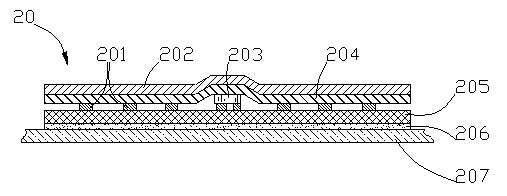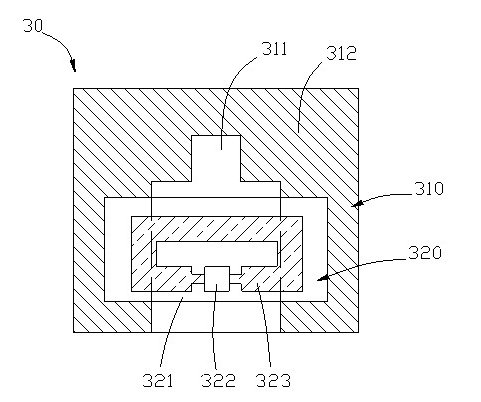Laser holographic radio frequency identification (RFID) tag using coplanar inverted F antenna
A technology of RFID tags and laser holography, which is applied in the field of RFID tags, can solve the problems of low efficiency of slit radiation and the difficulty of holographic film to meet the requirements, etc., and achieve the effect of simple manufacturing process
- Summary
- Abstract
- Description
- Claims
- Application Information
AI Technical Summary
Problems solved by technology
Method used
Image
Examples
Embodiment Construction
[0029] The present invention will be described below with reference to the description of the drawings and specific embodiments, and the specific embodiments are for illustration only, and are not intended to limit the present invention.
[0030] attached Figure 5 The RFID tag 50 of the embodiment of the present invention includes a coplanar inverted-F antenna 510, a substrate 520 and an RFID chip 530, wherein the coplanar inverted-F antenna 510 is fabricated on the substrate 520, and the RFID chip 530 is mounted on the antenna 510.
[0031] The coplanar inverted-F antenna 510 is composed of a ground plane 511 , a radiator 512 and a short circuit 513 . The ground plane 511 is a whole metal plane, the radiator 512 is an L-shaped metal wire, and one end is connected to the ground plane 511, one end of the short circuit 513 is connected to the ground plane 511, and the other end is connected to the radiator 512, and its shape is according to The impedance adjustment needs to be a...
PUM
 Login to View More
Login to View More Abstract
Description
Claims
Application Information
 Login to View More
Login to View More - R&D
- Intellectual Property
- Life Sciences
- Materials
- Tech Scout
- Unparalleled Data Quality
- Higher Quality Content
- 60% Fewer Hallucinations
Browse by: Latest US Patents, China's latest patents, Technical Efficacy Thesaurus, Application Domain, Technology Topic, Popular Technical Reports.
© 2025 PatSnap. All rights reserved.Legal|Privacy policy|Modern Slavery Act Transparency Statement|Sitemap|About US| Contact US: help@patsnap.com



